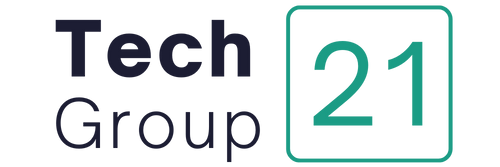Retrieval Augmented Generation (RAG) has become a game-changing technique for enhancing Large Language Models (LLMs). Developers looking to implement RAG in their projects can follow this step-by-step guide to navigate the process.
From understanding RAG architecture to deploying at scale, we’ll highlight key considerations and popular tools, including K2view’s RAG solution tool for seamless integration.
Step 1: Understand the RAG Architecture
Before diving into implementation, it’s essential to understand the core components of a RAG system:
- Retriever: Searches and retrieves relevant information from a knowledge base.
- Generator: An LLM that generates responses based on the input query and retrieved information.
- Knowledge Base: A collection of documents or data sources that the retriever can access.
Step 2: Prepare Your Data
The first practical step is preparing your data, which involves gathering relevant documents that will serve as your external knowledge source. After collecting the data, you must preprocess it for consistency. The final step in data preparation is creating embeddings, where your text data is converted into vector representations. Popular embedding models like OpenAI’s text-embedding-ada-002 can help with this task.
Step 3: Choose Your RAG Tools
Several open-source tools are available for implementing RAG. LangChain, LlamaIndex, and Hugging Face Transformers are popular options. Each tool offers unique advantages, but LangChain is particularly well-regarded for its ease of use and comprehensive feature set for RAG implementation.
Step 4: Set Up Your Development Environment
Setting up your development environment involves installing essential libraries and configuring API keys, especially if you’re using external services like OpenAI. Make sure all dependencies are installed and environment variables are correctly configured to avoid interruptions during the setup.
Step 5: Implement the Retriever
The retriever is responsible for fetching relevant information, and this involves two key tasks. First, create a vector store for your embeddings—this is where your preprocessed and embedded texts will be stored for efficient retrieval.

Second, configure the retriever to utilize this vector store and find relevant information based on input queries.
Step 6: Implement the Generator
For the generator, select an LLM such as OpenAI’s GPT models, and integrate it into your chosen RAG framework. The LLM will use the retrieved information and the original query to generate a response. At this stage, you’ll also establish a RAG chain, connecting the retriever and generator to work seamlessly together.
Step 7: Query Your RAG System
With the RAG system in place, you can begin querying it. Pass a question or prompt to the system, which will retrieve relevant information and generate a response based on the query and the retrieved context.
Step 8: Optimize and Refine
Optimization is crucial to improving the performance of your RAG system.

Focus on refining retrieval methods for better relevance, enhance prompt engineering to improve generation, and implement caching to reduce response times for frequently asked queries.
Step 9: Implement Monitoring and Evaluation
To ensure optimal performance, implement monitoring and evaluation tools. Platforms like LangSmith or TruLens-Eval can help analyze your application’s performance. Additionally, set up logging to track queries, retrieval accuracy, and generate responses for ongoing improvement.
Step 10: Scale and Deploy
Once your RAG application is fine-tuned, it’s time to scale and deploy. Use deployment tools like LangServe for easier scaling. Incorporate error handling, rate limiting, and periodic updates into your knowledge base to keep the system efficient and up-to-date in production environments.
Unlocking the Potential of RAG for AI Development
Implementing RAG tools can significantly elevate the performance of your AI applications. This step-by-step guide empowers developers to build powerful systems that leverage external knowledge for more accurate and contextually relevant responses. As you refine your RAG system, explore advanced techniques like iterative retrieval, multi-modal RAG, and hybrid approaches to further optimize your project’s performance.
The field of RAG is continuously evolving, with new research and tools emerging rapidly. Stay ahead by keeping up with the latest developments, ensuring your RAG implementations remain cutting-edge and competitive in today’s AI-driven landscape.



